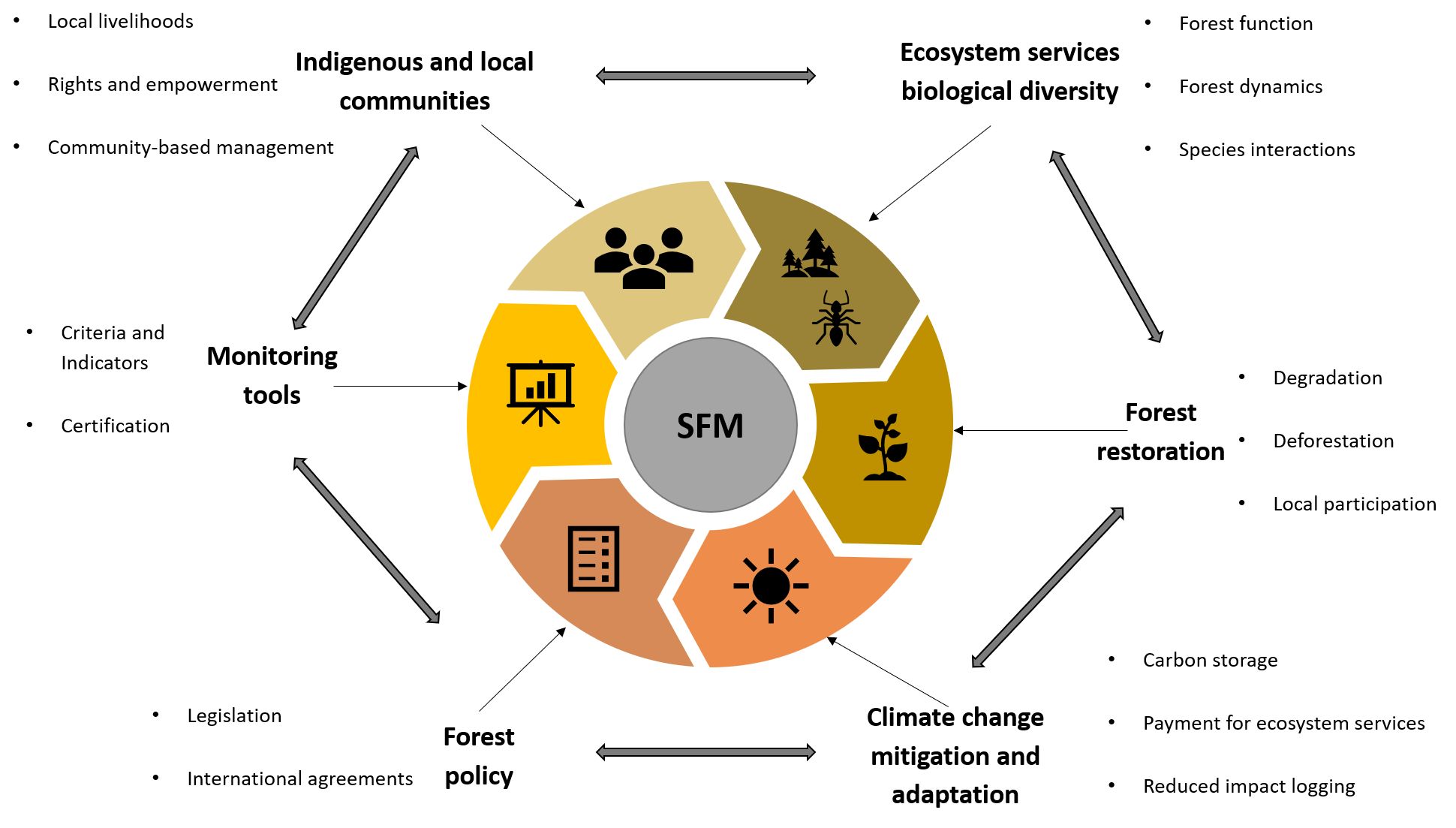Advances in Sustainable Forest Management
A special issue of Land (ISSN 2073-445X).
Deadline for manuscript submissions: closed (30 April 2022) | Viewed by 26113
Special Issue Editors
Interests: forest ecology; sustainable forest management
Special Issue Information
Dear Colleagues,
Forests in their multiple forms and types are the dominant terrestrial ecosystem on Earth, covering about one third of the globe’s land area. Forests represent a fundamental component of the world’s carbon cycle, are the habitat for biodiversity and are important for the provision of a myriad of services on which people depend for their livelihoods. Recent estimates indicate that the forest area under management plans, mostly for timber production, has increased since 2000, reaching close to 2.05 billion ha in 2020, but the demand for better management systems capable of satisfying multiple objectives has never been higher. At the same time, high rates of deforestation and degradation continue to threaten the stability of forests, particularly in the tropics. Climate change is threatening the resilience and stability of multiple forests worldwide, and thus, their ability to continuously provide vital ecosystem services to local communities is being increasingly compromised.

This Special Issue broadly aims at providing an updated overview of the recent advances in sustainable forest management (SFM) across different forest types and scales to highlight the relationships between SFM and key aspects of forestry such as the social, policy, and biological dimensions that are part of the process. The suggested topics might include but are not limited to:
(1) SFM and local communities:
- How can people better participate in the multiple benefits of forests?
- How can forest management be a tool for empowering local communities?
- Local incentive schemes and their socioeconomic effectiveness.
(2) Ecosystem services and biological diversity:
- How can SFM enhance the provision of critical ecosystem services?
- How can the multiple and often-conflicting benefits of forests (e.g., timber vs. nontimber forest products) be sustainably managed?
- Agroforestry practices for SFM.
(3) The monitoring of SFM:
- The application of criteria and indicators for the monitoring of SFM;
- Forest certification as a tool for enhancing SFM;
- The role of long-term ecological research as a tool for monitoring SFM.
(4) Forest restoration:
- The impacts of SFM and practices for forest restoration;
- Understanding the ecological drivers of forest dynamics to enhance forest restoration.
(5) Climate change adaptation and mitigation:
- SFM as a tool for enhancing carbon sequestration;
- Payment for ecosystem services in the context of SFM.
Dr. Emilio Vilanova
Dr. Lord Ameyaw
Guest Editors
Manuscript Submission Information
Manuscripts should be submitted online at www.mdpi.com by registering and logging in to this website. Once you are registered, click here to go to the submission form. Manuscripts can be submitted until the deadline. All submissions that pass pre-check are peer-reviewed. Accepted papers will be published continuously in the journal (as soon as accepted) and will be listed together on the special issue website. Research articles, review articles as well as short communications are invited. For planned papers, a title and short abstract (about 100 words) can be sent to the Editorial Office for announcement on this website.
Submitted manuscripts should not have been published previously, nor be under consideration for publication elsewhere (except conference proceedings papers). All manuscripts are thoroughly refereed through a single-blind peer-review process. A guide for authors and other relevant information for submission of manuscripts is available on the Instructions for Authors page. Land is an international peer-reviewed open access monthly journal published by MDPI.
Please visit the Instructions for Authors page before submitting a manuscript. The Article Processing Charge (APC) for publication in this open access journal is 2600 CHF (Swiss Francs). Submitted papers should be well formatted and use good English. Authors may use MDPI's English editing service prior to publication or during author revisions.
Keywords
- agroforestry
- climate change
- community forest management
- ecological forestry
- ecosystem services
- forest certification
- sustainable forest management
- socioecological systems






